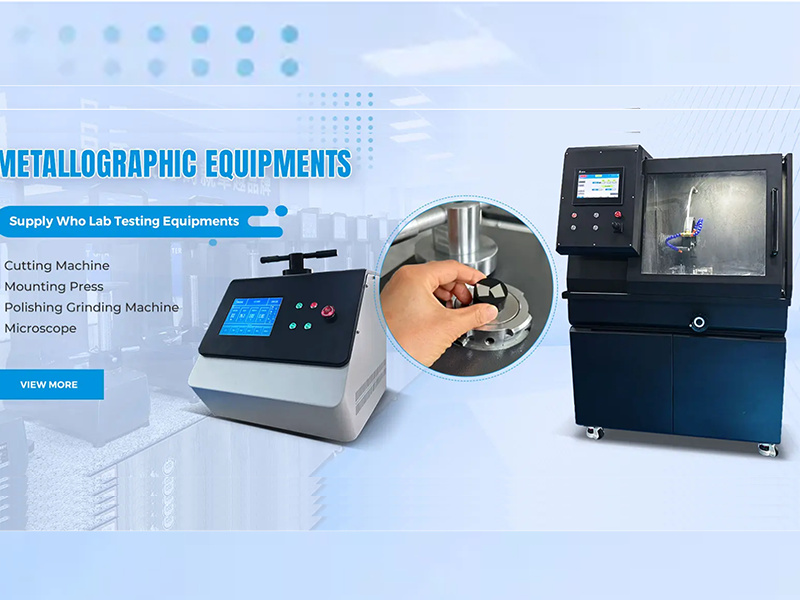As a key step before material hardness testing or metallographic analysis, sample cutting aims to obtain samples with appropriate dimensions and good surface conditions from raw materials or parts, providing a reliable basis for subsequent metallographic analysis, performance testing, etc. Improper operations in cutting process may lead to problems such as cracks, deformation, and overheating damage on the sample surface, directly affecting the accuracy of test results. Therefore, we should pay much attention to the following key elements :
1.Selection of Cutting Blades/cutting wheel
Different materials require matching own cutting blades/cutting wheel:
- For ferrous metals (such as steel and cast iron), resin-bonded alumina cutting blades are usually selected, which have moderate hardness and good heat dissipation, and can reduce sparks and overheating during cutting;
- Non-ferrous metals (such as copper, aluminum, alloys) are soft and easy to stick to the blade. Diamond cutting blades/cutting wheel or fine-grained silicon carbide cutting blades/cutting wheel need to be used to avoid “tearing” of the sample surface or residual debris;
- For brittle materials like ceramics and glass, high-hardness diamond cutting blades/cutting wheel are required, and the feed rate should be controlled during cutting to prevent sample chipping.
2.Importance of clamps
The function of clamp is to fix the sample and ensure stability during cutting:
-For samples with irregular shapes, adjustable clamps or custom tooling should be used to avoid dimensional deviations caused by sample shaking during cutting;
-For thin-walled and slender parts, flexible clamps or additional support structures should be adopted to prevent sample deformation due to excessive cutting force;
-The contact part between the clamp and the sample should be smooth to avoid scratching the sample surface, which may affect subsequent observation.
3.Role of Cutting Fluid
Adequate and appropriate cutting fluid is key to reducing damage:
-Cooling effect: It takes away the heat generated during cutting, preventing the sample from tissue changes due to high temperature (such as “ablation” of metal materials);
-Lubricating effect: It reduces the friction between the cutting blade and the sample, lowers the surface roughness, and prolongs the service life of the cutting blade;
-Chip removal effect: It timely flushes away the chips generated during cutting, preventing chips from adhering to the sample surface or clogging the cutting blade, which may affect cutting accuracy.
Generally, water-based cutting fluid (with good cooling performance, suitable for metals) or oil-based cutting fluid (with strong lubricity, suitable for brittle materials) are selected according to the material.
4.Reasonable Setting of Cutting Parameters
Adjust parameters according to material characteristics to balance efficiency and quality:
-Feed rate: For materials of high hardness (such as high-carbon steel and ceramics), the feed rate should be reduced to avoid overload of the cutting blade or sample damage; for soft materials, the feed rate can be appropriately increased to improve efficiency;
-Cutting speed: The linear speed of the cutting blade should match the hardness of the material. For example, the linear speed commonly used for metal cutting is 20-30m/s, while ceramics require a lower speed to reduce impact;
-Control of feed amount: Through the X, Y, Z automatic control function of the equipment, precise feeding is realized to avoid surface cracking of the sample caused by excessive one-time feed amount.
5.Auxiliary Role of Equipment Functions
-The fully enclosed transparent protective cover can not only isolate debris and noise but also facilitate real-time observation of the cutting state and timely detection of abnormalities;
-The 10-inch touch screen can intuitively set cutting parameters, and cooperate with the automatic feeding system to realize standardized operations and reduce human errors;
-LED lighting enhances observation clarity, enabling timely judgment of the sample cutting position and surface state to ensure the accuracy of the cutting end point.
In conclusion, sample cutting needs to balance “precision” and “protection”. By reasonably matching equipment, tools, and parameters, a good foundation is laid for subsequent sample preparation (such as grinding, polishing, and corrosion) and testing, ultimately ensuring the authenticity and reliability of material analysis results.

Post time: Jul-30-2025







